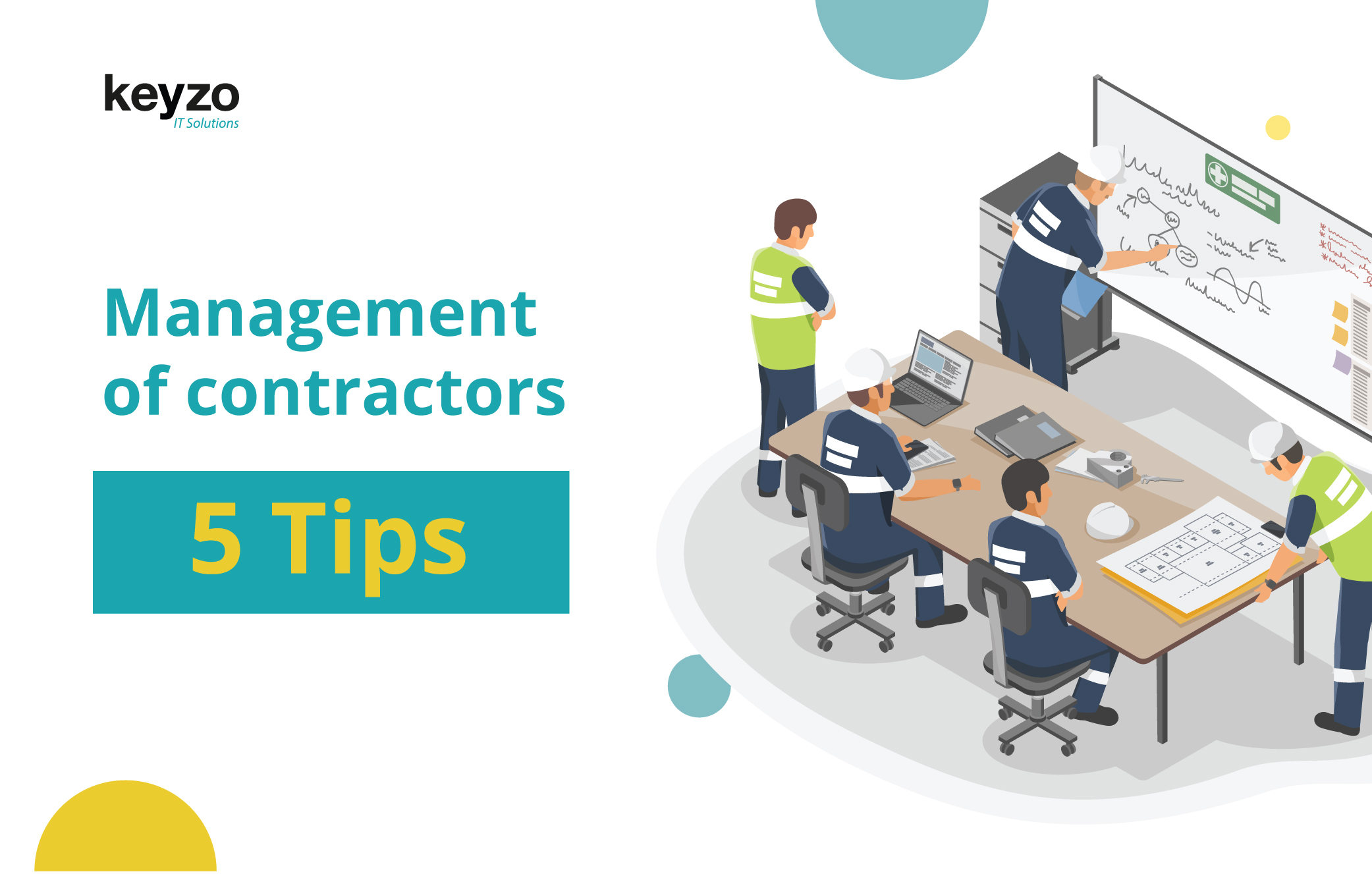
Management of contractors | 5 top tips
Management of contractors is crucial for keeping projects on track and ensuring quality work.
In this post, we’ll explore 5 essential tips that will help you streamline contractor management whether you’re overseeing a small team or a large-scale operation.
Let’s take a look.
Why Effective management of contractors matters
Effective management of contractors is crucial across all industries. Proper contractor management ensures projects are completed on time, within budget, and to high standards.
By implementing best practices for contractor oversight, you can improve your compliance, operations and overall processes.
Whether you’re managing contractors in construction, IT, or any other field, mastering contractor management practices will drive better project outcomes and produce a more productive working relationship.
#1 Managing Contractor Induction & Onboarding
Setting the Stage With Contractor Inductions and Training
A thorough induction and onboarding process is essential to prepare contractors effectively for work on your site.
A contractor induction ensures that contractors understand their roles, company policies, and site-specific requirements, leading to smoother project execution.
Contractor Safety Training
Provide comprehensive safety training and resources to ensure contractors are aware of and can adhere to safety procedures.
Familiarisation with Policies
Introduce contractors to company policies, procedures, and expectations to align their work with your standards.
Location-specific Requirements
Inform contractors about location-specific rules and operational guidelines, for example site rules, departmental procedures and so on.
Introductions to Key Personnel
Make introductions to key team members, this will help you build rapport quickly and kickstart communication.
Utilise Digital Induction Platforms
For large or frequent contractor activities, using a digital induction platform helps manage documentation, training delivery and compliance. This allows you to onboard remotely before work commences, taking away some of the burden.
#2 Contractor documentation and compliance
Compliance: Protecting your business and contractors
Ensuring compliance is crucial in contractor management. Proper documentation, safety training, and adherence to site-specific requirements are essential to protect both your business and contractors.
Establish Key Contacts
Identify key members of the contracting company who can supply you with important documentation to ensure records are correct and up to date.
Contractor Documentation
Maintain updated records of contracts, certifications, insurance, permits to work and any accreditations. Ensure you clearly define the requirements for contractors to work at your premises and begin asking for evidence early to prevent delay.
Site Requirements
Ensure you have appropriate procedures in place for all sites involved. For example, if a contractor begins works on site 1 and completes an induction, but then attends site 2, will they be made aware of site 2 rules before entry?
#3 Establish Communication Lines with Contractors
Communication: The Foundation of Effective Contractor Management
Clear communication lines are essential for effective contractor management. Establishing open lines of communication between contractors and the internal team ensures that expectations are set clearly and that everyone is aligned on project goals.
Set Expectations
Clearly define roles, responsibilities and deliverables from the start and make not of everything discussed or any changes agreed. This allows you to view the project clearly, and better manage any disputes or discrepancies.
Regular Check-Ins
Schedule consistent meetings to monitor progress, address issues, and provide feedback. Regular check-ins ensure that you are aware of the timelines and can resolve any critical issues before they become blockers.
Utilise Project Management Tools
Use tools which can help you collaboratively update and track project status. For example, you could use something like Trello to monitor progress of specific items and communicate updates with your team.
#4 Track time on site and progress
Time tracking: Monitoring contractor efficiency
Tracking time on site and monitoring project milestones are essential for ensuring that contractors meet deadlines and project goals. This practice helps in assessing contractor efficiency and maintaining agreed timelines.
Monitor Time on Site
Use technology to track time on site and efficiently manage hours worked and contractor schedules. For instance, a clock-in system linked to induction status can log entry and exit times and block non-compliant access, like when critical training is incomplete.
Project Pulse
Regularly review progress against key milestones to ensure that the project stays on track. Regular drop-ins are your way of staying abreast of changes or challenges which may cause project delays.
#5 Use Contractor Management Software
Leveraging Technology for Contractor Management
Utilising contractor management software can significantly streamline various aspects of managing contractors, including inductions, tracking, and compliance.
Streamlined Inductions
Automate the induction process with training modules, digital forms and certification requests. Create contractor specific inductions and ensure that each contractor goes through a standardised procedure.
Multiple Projects
Contractor software allows you to manage more projects and personnel without any additional resources. For example, you could request additional documentation from all contractors in a single hit.
Enhanced Compliance
Using contractor management software allows you to track, record and manage all of your contractor data in one place. It ensures all documentation and certifications are stored correctly, making it easier to maintain up-to-date records.
Software solutions like Induct & Train can simplify contractor management and inductions, helping you stay organised and efficient.
Future-Proofing Your Contractor Management Strategy
As industries evolve, so do the challenges in the management of contractors. Staying proactive and regularly updating your contractor management practices can ensure your processes remain efficient and compliant with new regulations.
Embrace continuous improvement by integrating feedback, adopting new technologies, and staying informed about industry best practices to keep your contractor management strategy robust and future-ready.

